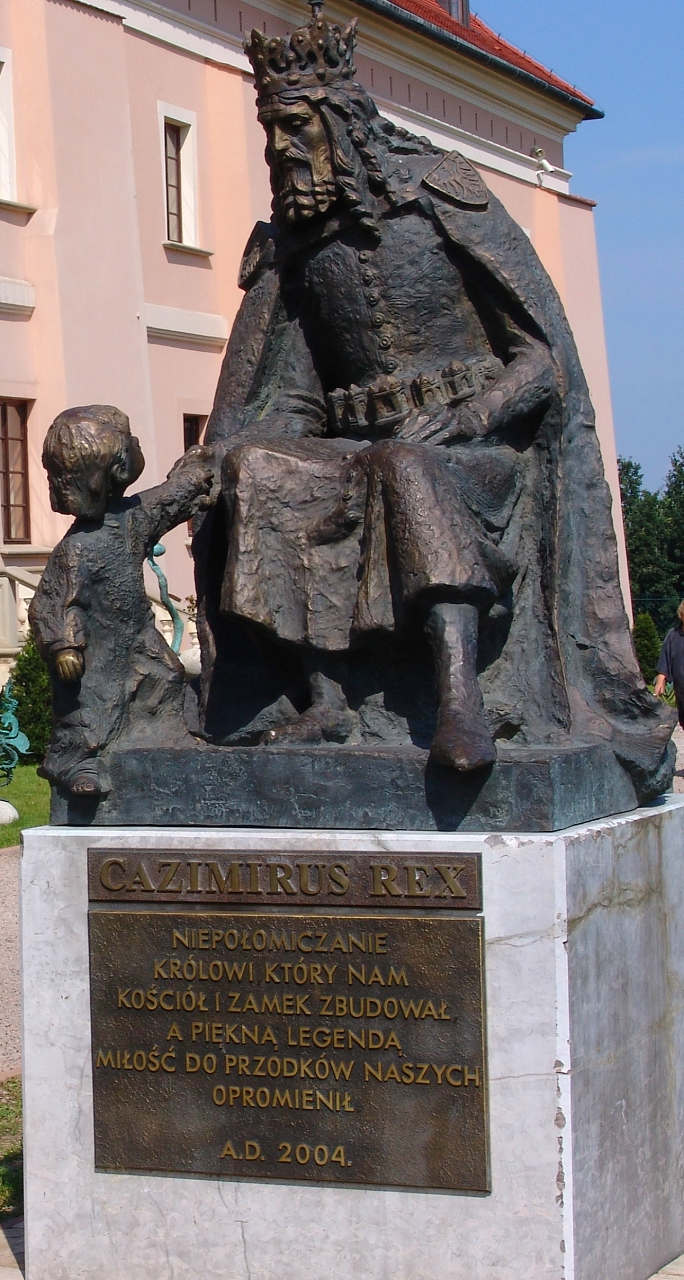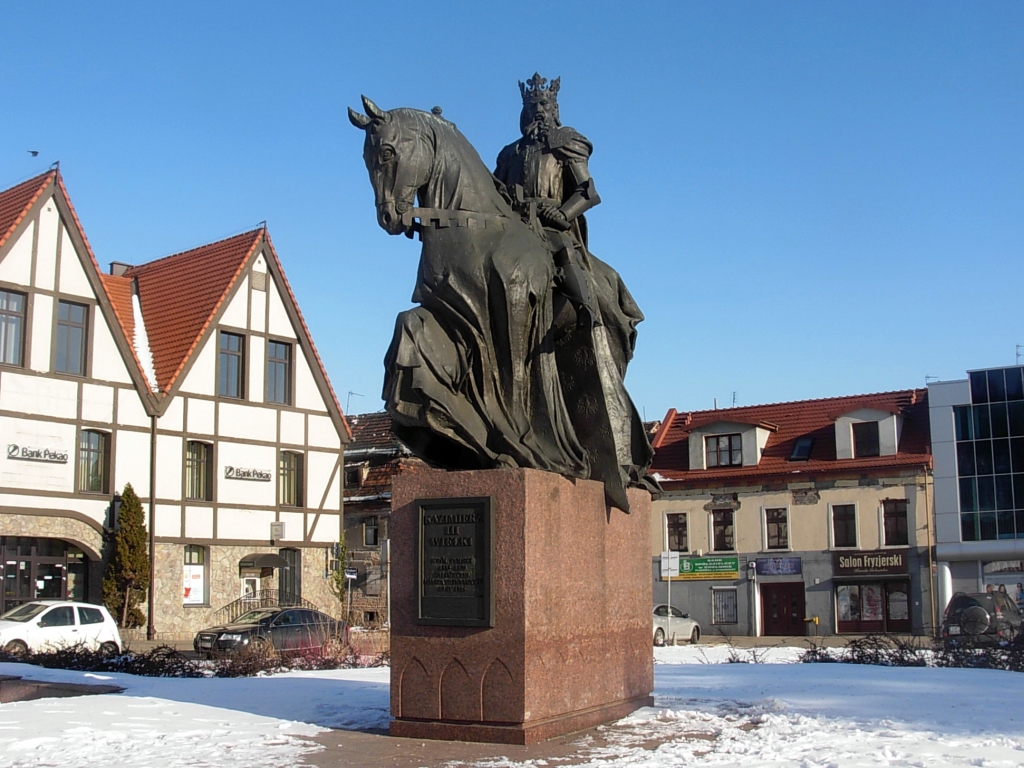1. Early life and background
Casimir III's early life was marked by his position as the youngest son of the reigning monarch, his education by prominent intellectuals, and early exposure to political and diplomatic challenges that shaped his future reign.
1.1. Birth, childhood, and education
Casimir was born on 30 April 1310, in Kowal, Kuyavia, as the third and youngest son of King Władysław I of Poland and Jadwiga of Kalisz. His two older brothers, Stefan and Władysław, died in infancy in 1306 and 1312 respectively, making Casimir the sole heir to his father's throne at just two years old. He also had three sisters: Kunegunda, Elżbieta, and Jadwiga.
He grew up in Wawel, the royal residence in Kraków. His education was overseen by notable figures, including Spycimir Leliwita, an outstanding lawyer and intellectual, and Jarosław Bogoria of Skotniki, a Franciscan friar. This upbringing instilled in him a broad range of knowledge, particularly in law. When Casimir was around ten years old, his sister Elżbieta married Charles I of Hungary, the King of Hungary, and Casimir often visited the Hungarian court in Budziński, a significant cultural and political center at the time.
1.2. Early experiences and political activities
Casimir's pre-accession life included significant political and personal events that prepared him for kingship. In 1315, he was betrothed to Princess Bonna, daughter of John of Luxembourg, but this engagement was annulled due to suspicions that Bonna and her mother plotted to claim the Polish throne. Around 1322, he was engaged to Anna, daughter of Fryderyk Piekna, but this alliance also failed after Frederick's defeat in the Battle of Mühldorf. Casimir ultimately married Aldona of Lithuania, daughter of Grand Duke Gediminas of Lithuania, who was baptized as Anna.
Around 1327, or shortly after his marriage, Casimir suffered a severe illness that threatened his life. His mother, Queen Jadwiga, entrusted his recovery to Saint Louis and the administration of the court. After more than a year of treatment, he recovered, a fact celebrated in a letter from the Queen to Pope John XXII.
In his father's later years, Casimir was sent to Hungary to gain military and diplomatic experience. He visited Visegrád to strengthen the alliance against the Teutonic Knights and Bohemia. During this time, he was involved in the controversial "Klara Zach incident." Casimir allegedly had a secret relationship with Klara Zach, a lady-in-waiting and friend of his sister Elżbieta. Some accounts suggest he assaulted Klara. In April 1330, Klara's father, Felicjan Zach, attempted to assassinate Casimir and attacked Queen Elżbieta, severing four of her fingers, before being killed by her retainer. The Zach family was brutally punished, with Klara being publicly humiliated. Chroniclers like Jan Długosz believed this incident was a Teutonic Knight plot to discredit Casimir.
In 1329, Casimir accompanied his father in a campaign against rebels in Chełmno. On 26 May 1331, at the Chęciny uprising, Władysław I appointed Casimir as governor of Wielkopolska, Sieradz, and Kuyavia, strategic territories aimed at defending against the Teutonic Knights. Although an important title, some historians argue it was largely nominal. The appointment sparked opposition from former officials, leading Wincenty of Szamotuły to ally with Brandenburg and potentially the Teutonic Knights. The Teutonic Knights attacked Pyzdry, where Casimir was residing, but he managed to escape. In September 1331, a Teutonic-Luxembourg alliance planned an attack on Poland, leading to the siege of Głogów. Casimir participated in the Battle of Płowce against the Teutonic Knights in 1331, where Polish forces initially gained ground but later retreated. He also participated in retaliatory campaigns in Chełmno in August 1332 and later captured Kościan, showcasing his independent military initiative, even against his father's wishes to protect his only son.
2. Reign as King of Poland
Casimir III's reign, spanning nearly four decades, was transformative for Poland, marked by significant domestic reforms, strategic foreign policy, and a doubling of the kingdom's territory.
2.1. Accession and initial challenges

Upon the death of his father, Władysław I the Elbow-high, on 2 March 1333, Casimir III ascended to the Polish throne. His coronation took place on 25 April 1333, performed by Archbishop Janisław of Gniezno. Despite the kingdom having been recently unified, Casimir inherited a state significantly weakened by war, depopulation, and a ruined economy. His position was precarious, as neighboring states, particularly Bohemia, did not fully recognize his title, instead calling him merely "King of Kraków."
At the time of his accession, Poland's territory was limited to little over 39 K mile2 (100.00 K km2), primarily comprising the core provinces of Lesser Poland and Greater Poland. Sieradz was managed by local nobility, and Łęczyca by Władysław Garbaty. Significant territories, including Kuyavia, Dobrzyń Land, and Gdańsk Pomerania, were occupied by the Teutonic Knights. Relations with Brandenburg were strained despite prior treaties, and Poland was officially at war with Bohemia and most Silesian duchies, which had acknowledged Bohemian suzerainty. The Mazovian duchies maintained a reluctant independence, while the Principality of Halych-Volhynia sought Polish support. Casimir also faced the ongoing task of consolidating the Polish crown, which had historically been fragmented among various Piast dukes.
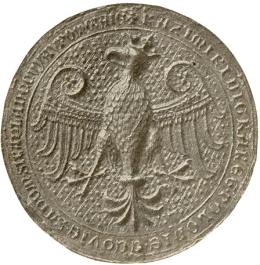
2.2. Domestic policy and reforms
Casimir III implemented far-reaching internal reforms that stabilized and developed Poland, laying strong foundations for future prosperity. He is famously credited with transforming a "wooden Poland" into a "brick Poland" through his extensive building programs and legal reforms. His reign also saw the reform of the Polish army.
2.2.1. Judicial and administrative reforms
Casimir was instrumental in codifying Polish law, earning him the moniker "the Polish Justinian." At the Sejm in Wiślica on 11 March 1347, he introduced comprehensive reforms to the Polish judicial system and sanctioned codified civil and criminal laws for both Greater and Lesser Poland. These reforms aimed to curb the overwhelming power of the nobility and establish a stronger legal and administrative foundation for the kingdom. He also established the Corona Regni Poloniae - the Crown of the Polish Kingdom - a concept that asserted the existence of Polish lands as an independent entity, distinct from the monarch's personal property, which had previously been the case under the Piast dynasty.
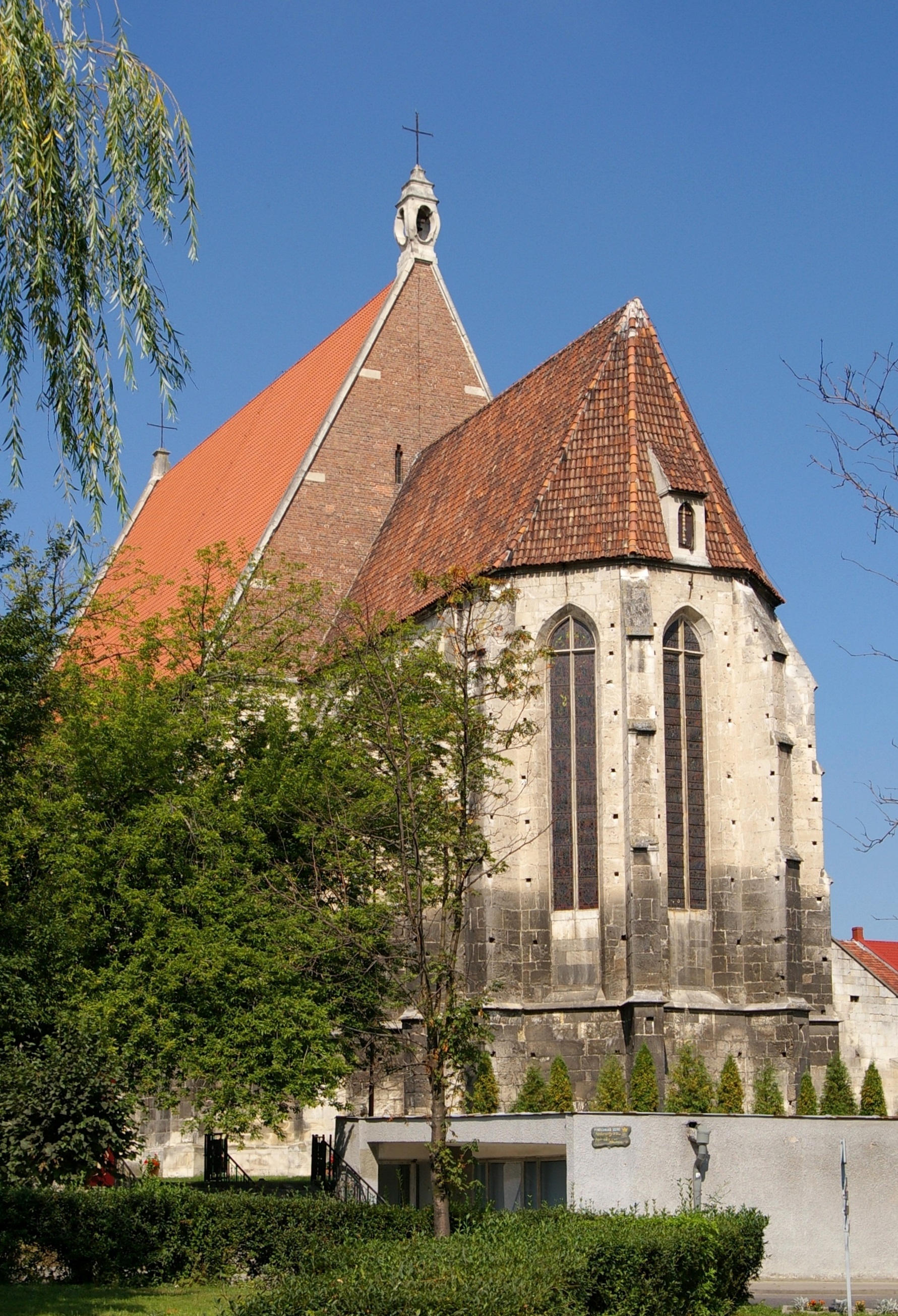
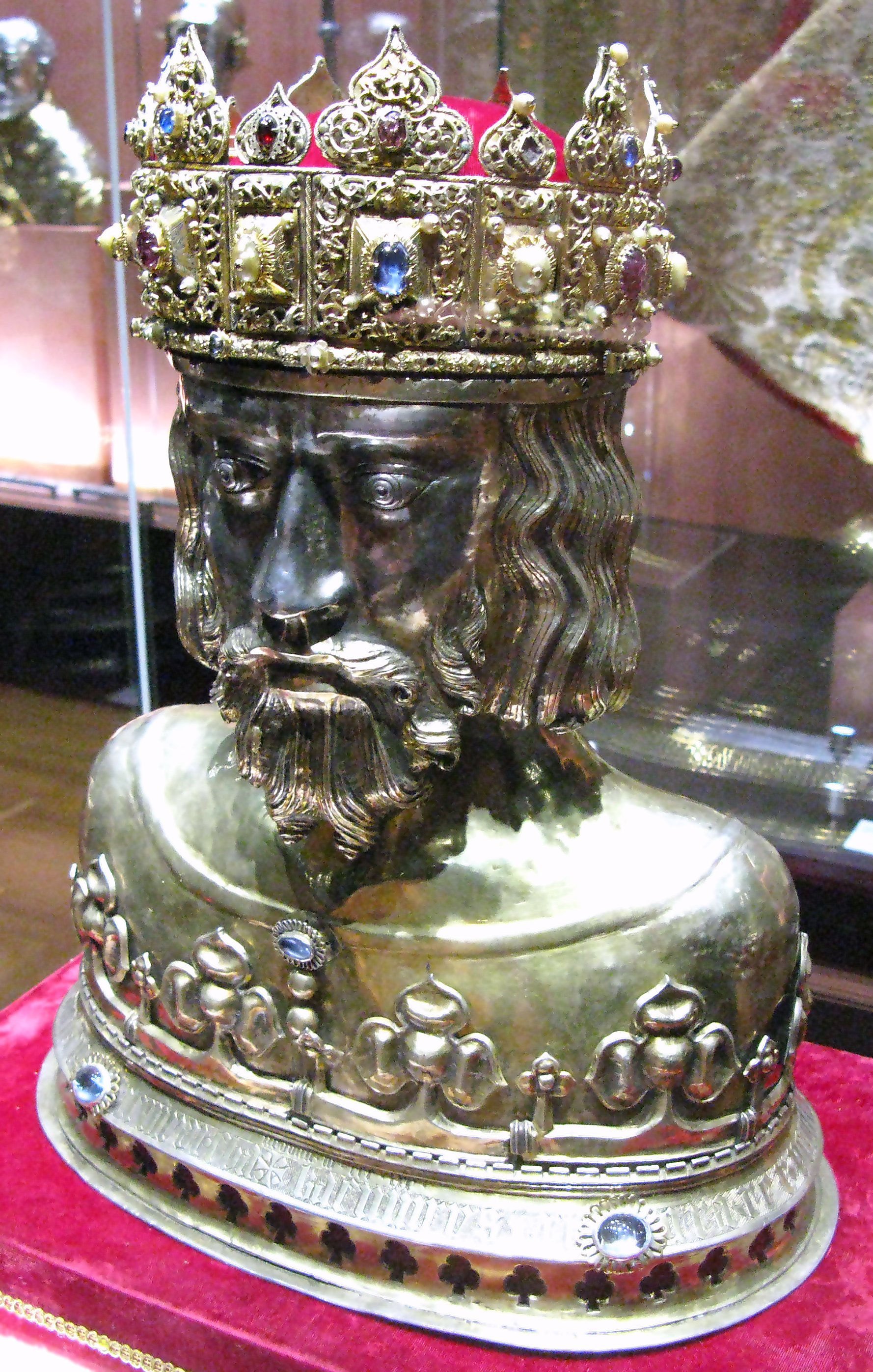
2.2.2. Economic and urban development
Under Casimir's reign, Poland experienced significant economic prosperity and urban growth. He initiated massive construction projects, including fortifying nearly 30 towns with defensive walls and erecting approximately 50 castles, notably along the strategic Trail of the Eagle's Nests. These architectural achievements are still celebrated in a popular ditty: "inherited wooden towns and left them fortified with stone and brick." In 1364, Casimir hosted a grand meeting of kings in Kraków, showcasing the wealth and burgeoning power of the Polish kingdom.
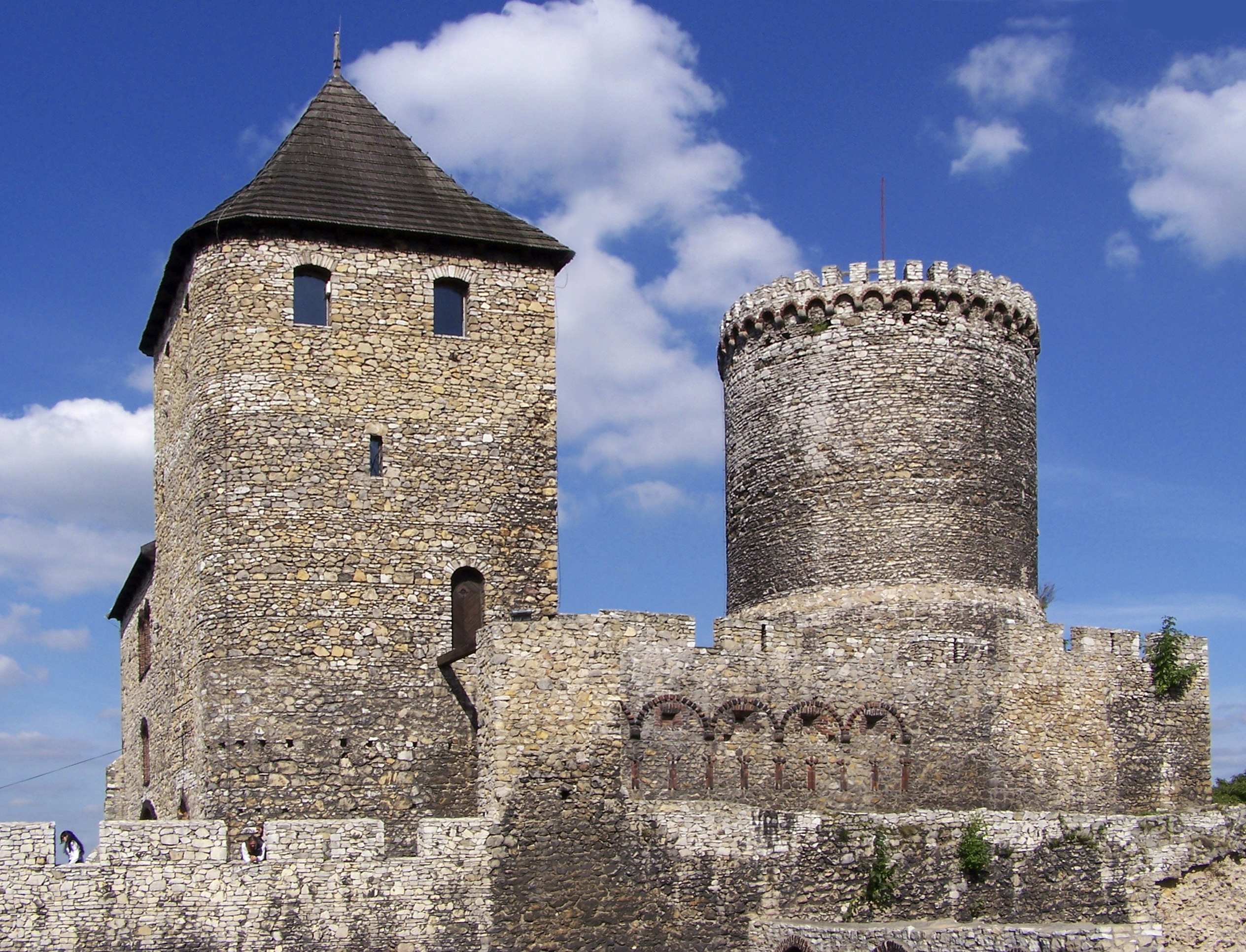
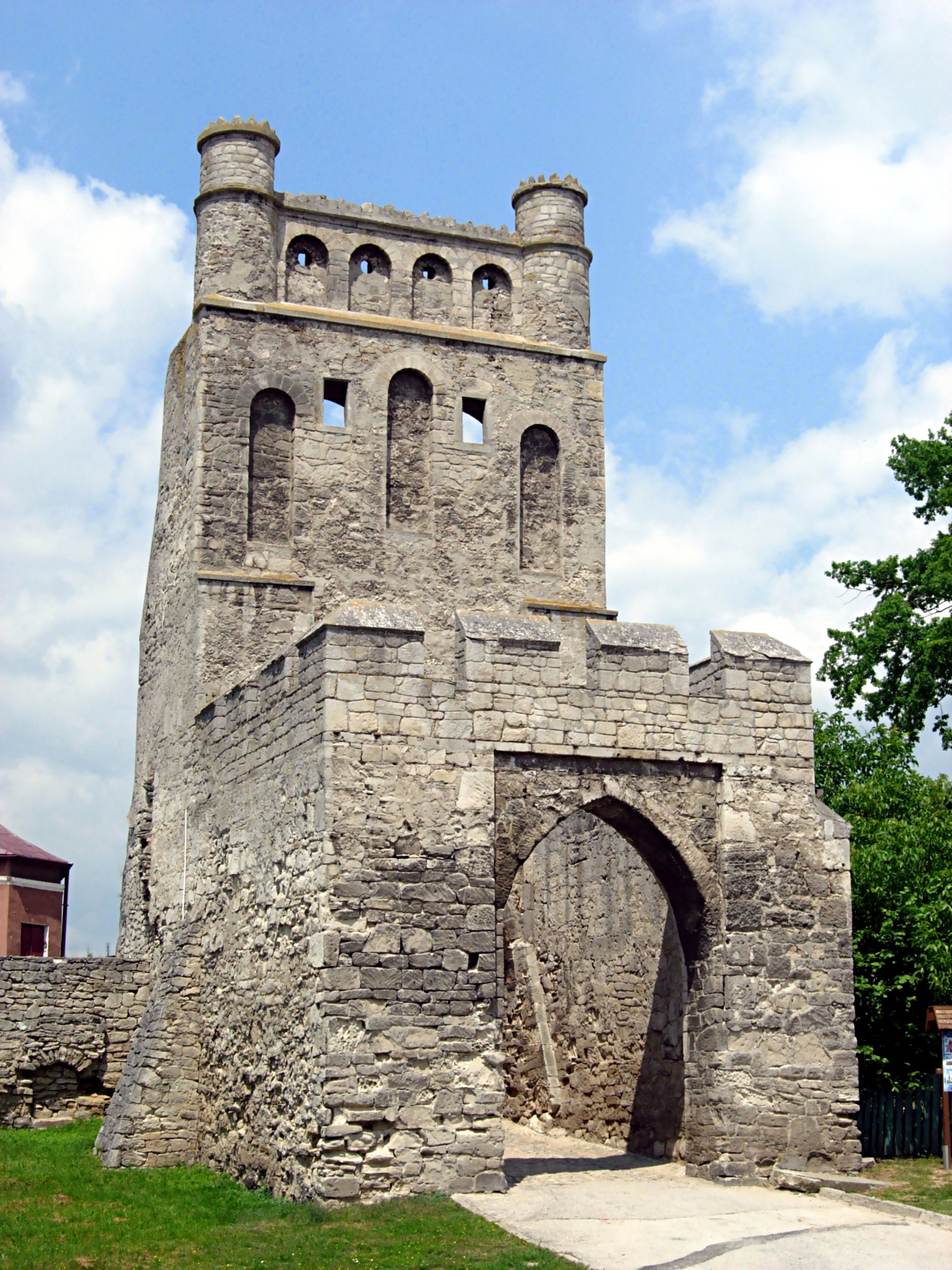
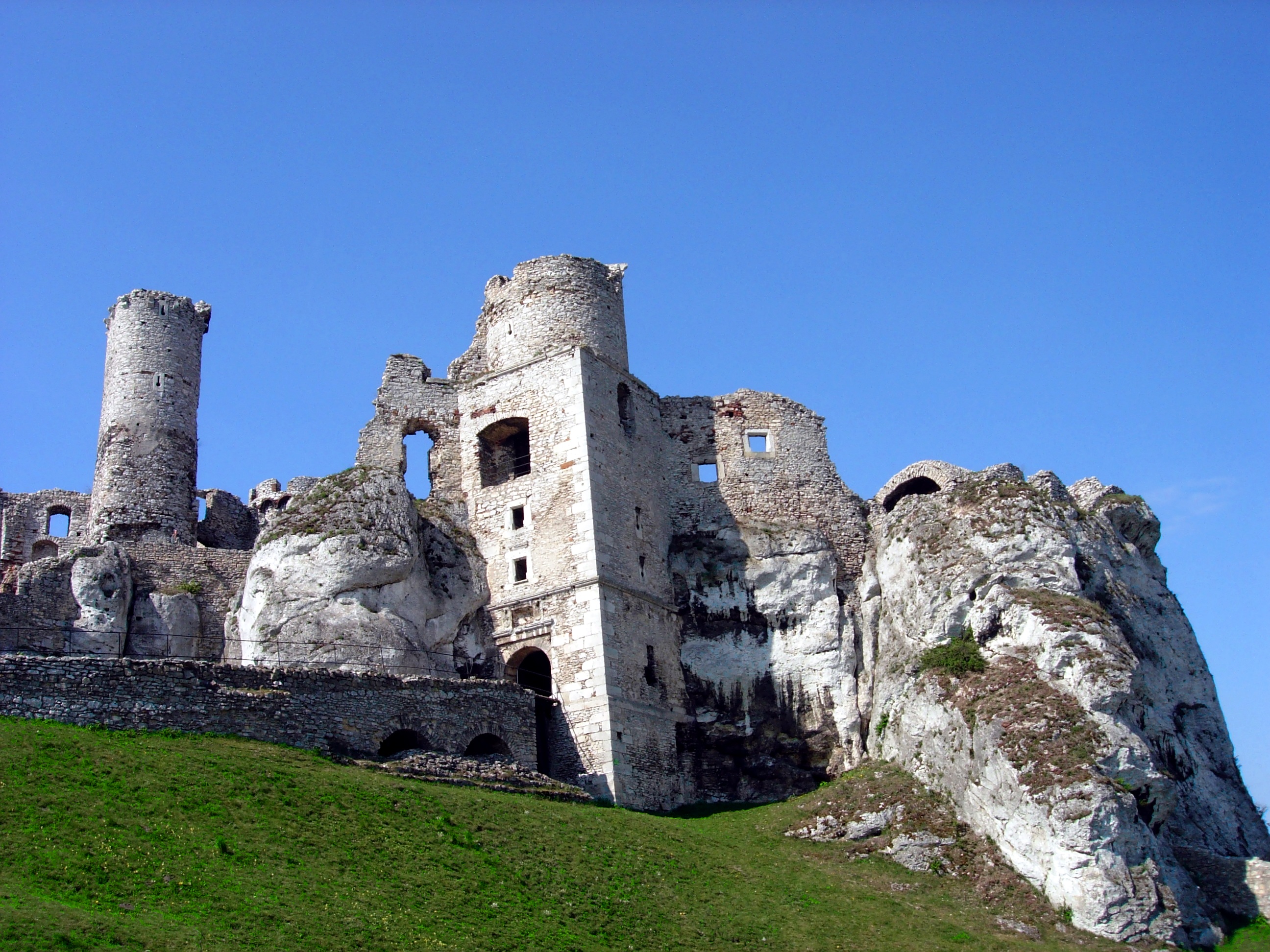
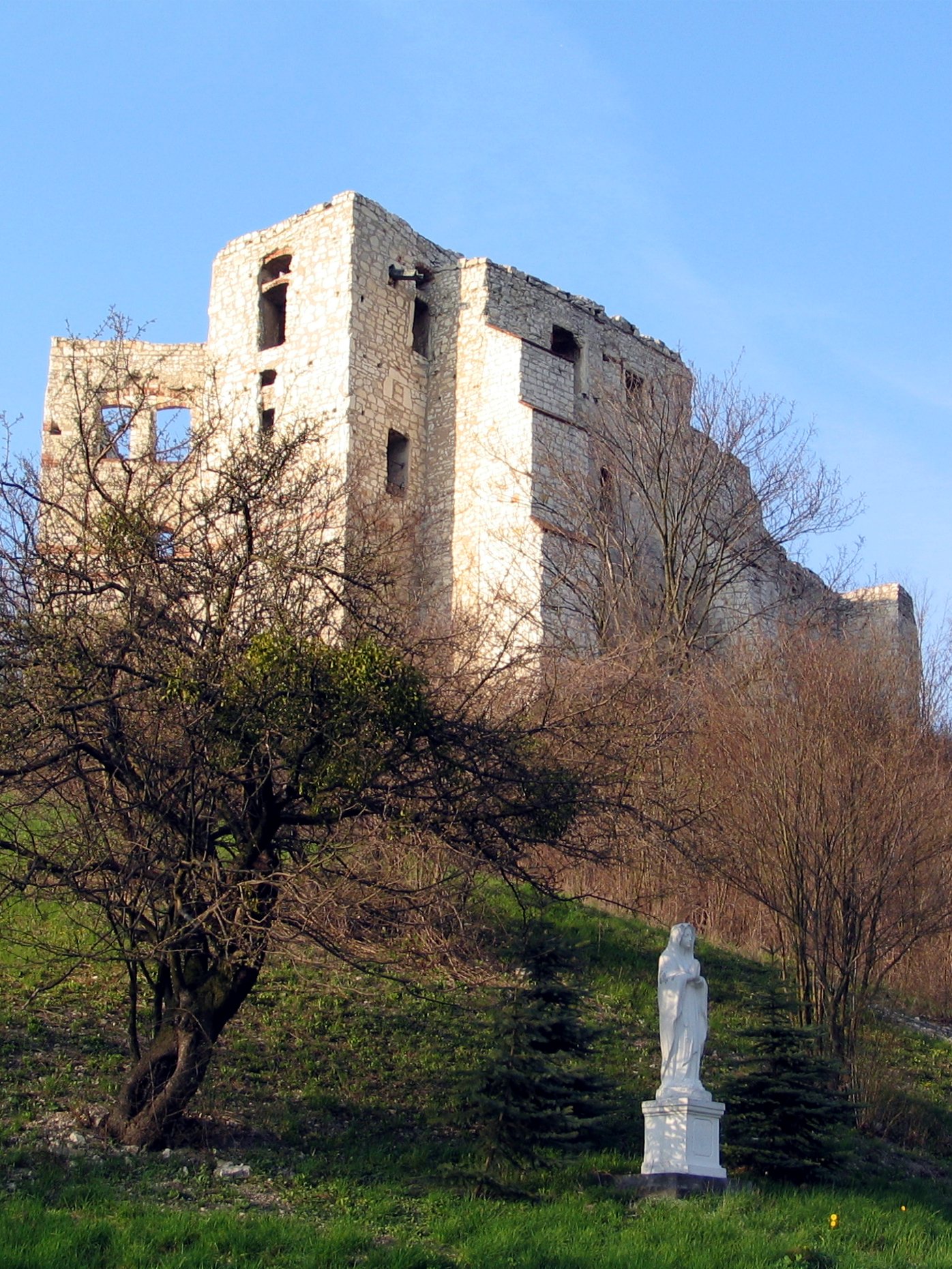
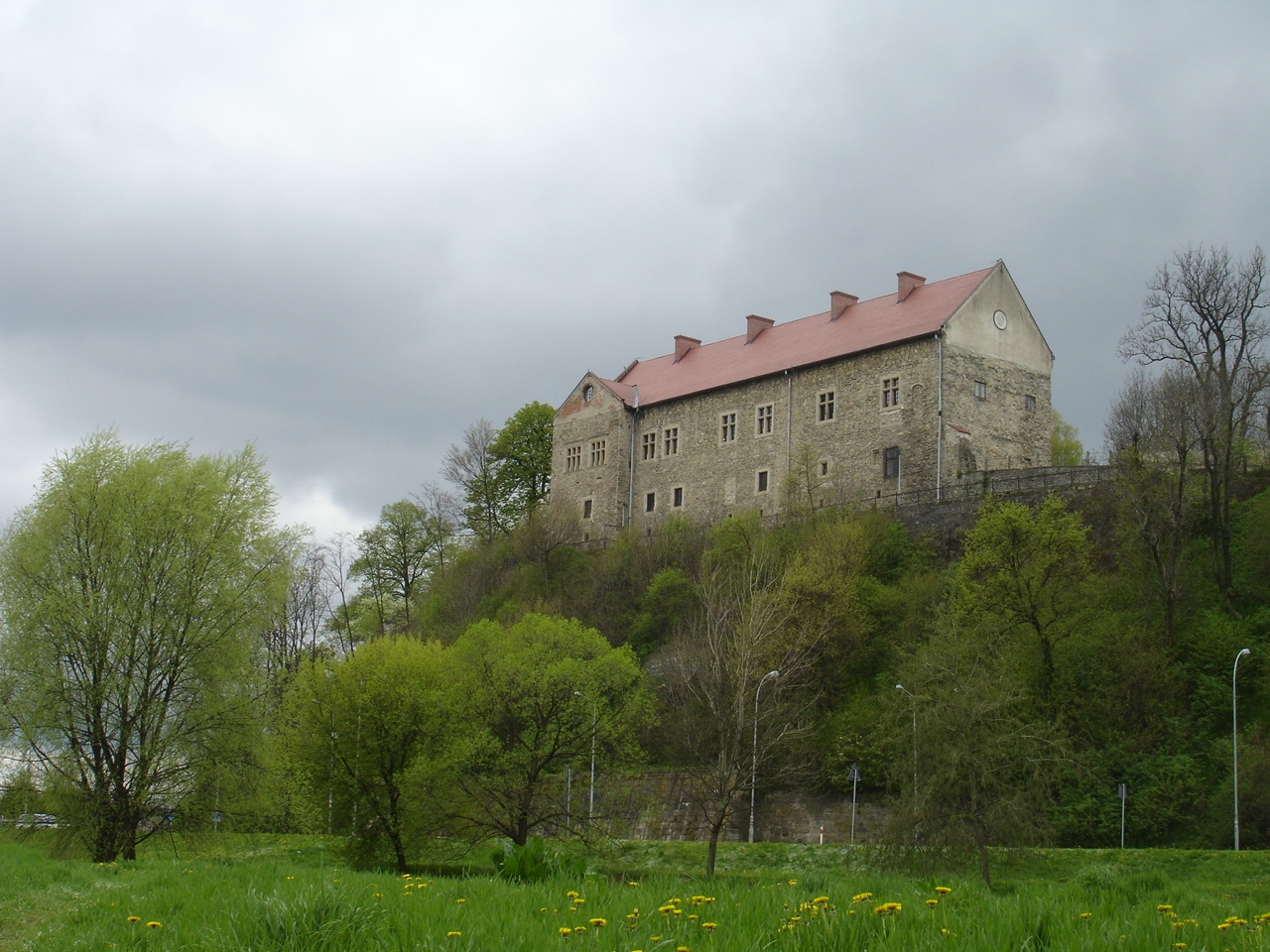
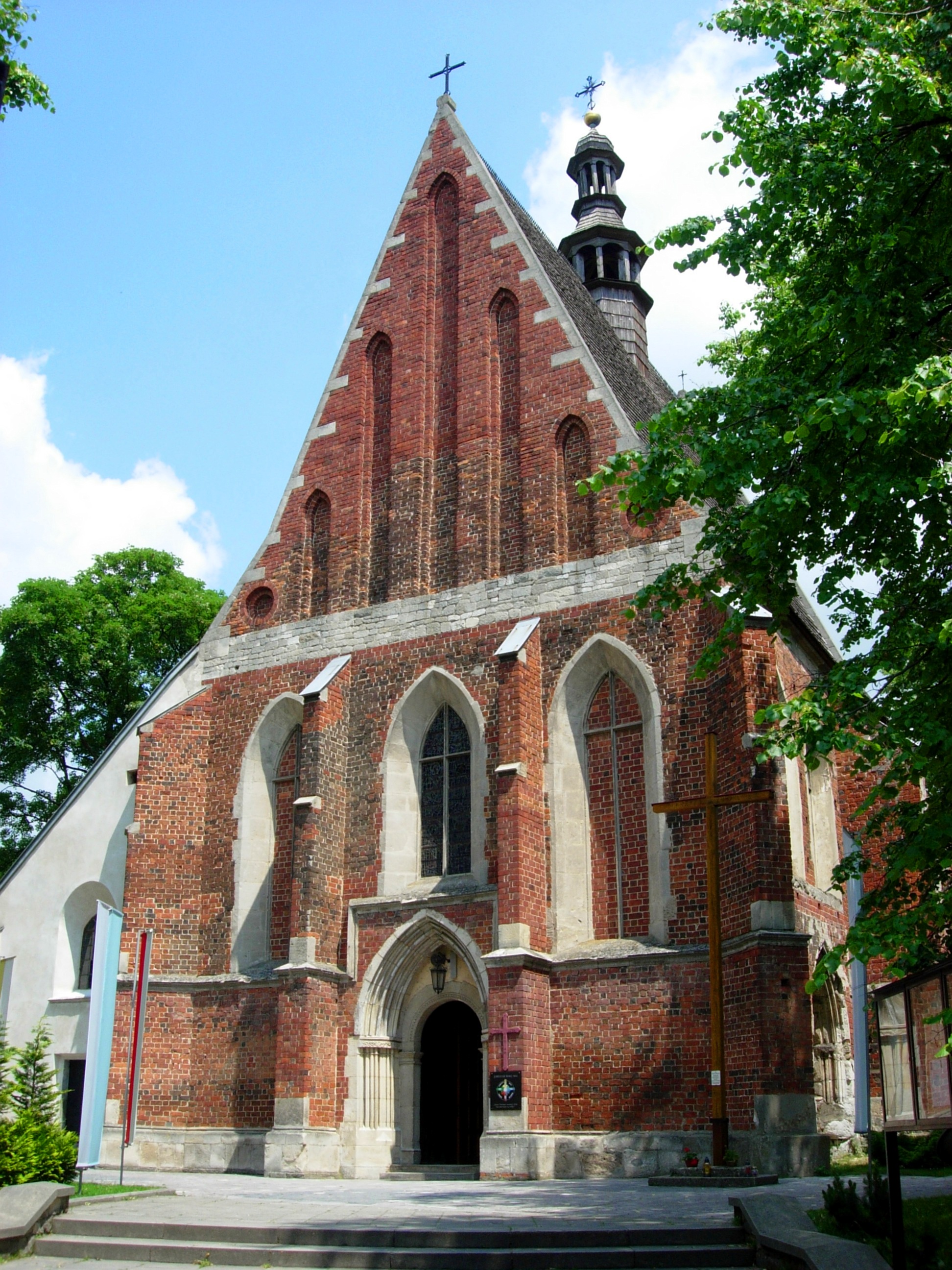
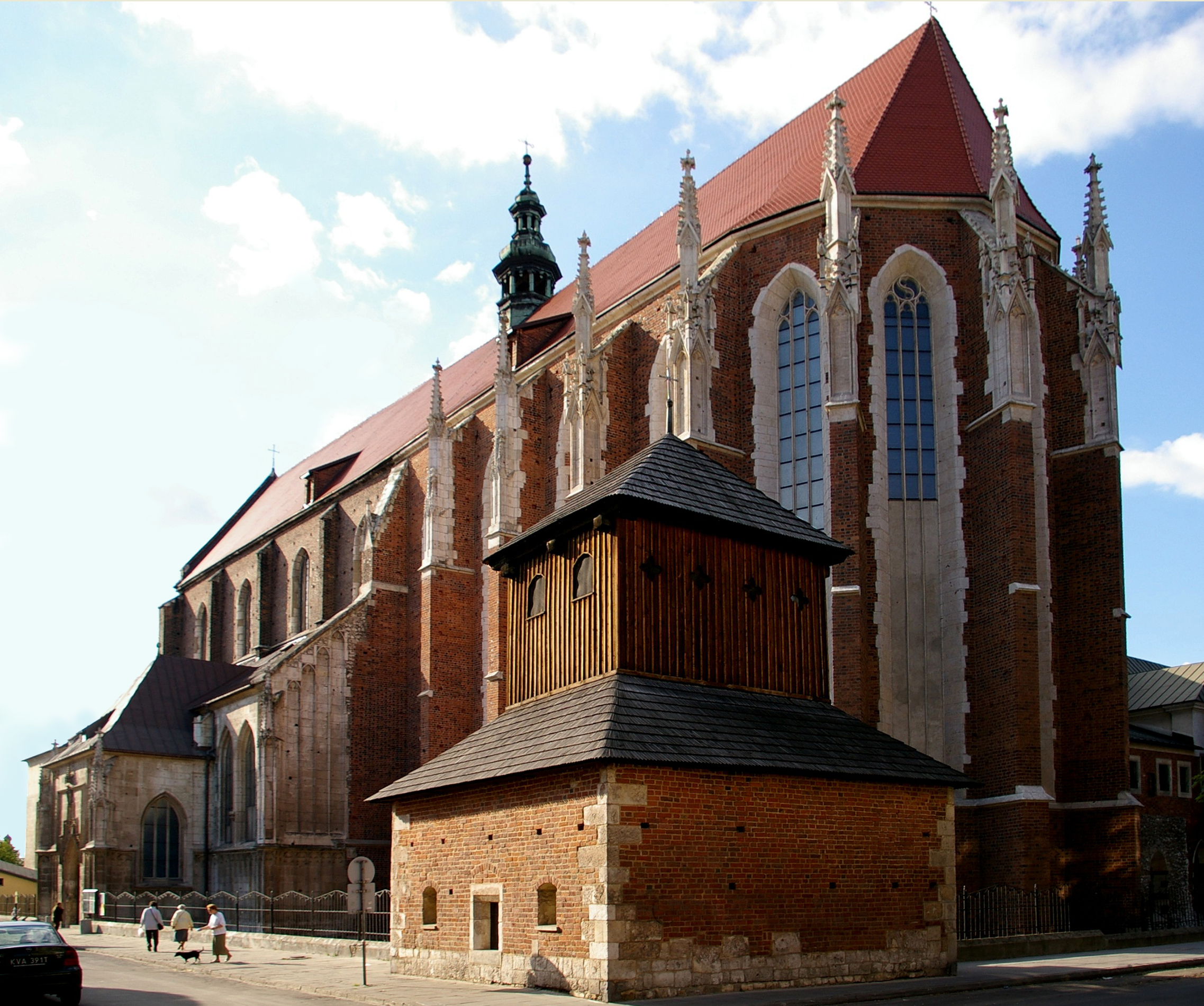
2.2.3. Support for the peasantry
Casimir's sympathetic approach to the lower social classes earned him the popular title "the Peasants' King." He actively worked to protect and improve the lives of serfs and other commoners, balancing their interests against the traditional dominance of the nobility and clergy. He was known for siding with the weak when the law did not protect them, even reportedly supporting a peasant whose house had been demolished by his own mistress, who had ordered it removed for aesthetic reasons. His popularity among the peasantry was crucial in rebuilding the country, as a significant part of the national reconstruction program was funded through a land tax paid by the lower social classes.
2.2.4. Establishment of Kraków University
In 1364, with the permission of Pope Urban V, Casimir established the Jagiellonian University in Kraków, initially known as the University of Kraków. It holds the distinction of being the oldest university in Poland and was only the second university founded in Central Europe, following Charles University in Prague. Its establishment marked a pivotal moment for Poland's intellectual and cultural development, fostering advancements in fields like astronomy and law.
2.3. Foreign policy and territorial expansion
Casimir III demonstrated remarkable diplomatic skill and strategic military action, effectively neutralizing western and northern threats while doubling the size of his kingdom through eastward expansion.
2.3.1. Relations with the Holy Roman Empire and Bohemia
Casimir's early reign focused on stabilizing relations with powerful neighbors like the Holy Roman Empire and Bohemia. In 1335, at the Congress of Visegrád, he negotiated with John of Bohemia and Charles I of Hungary. While he was compelled to permanently relinquish claims to Silesia in the Treaty of Trentschin, he secured recognition of his title as King of Poland and paid a substantial sum to John of Bohemia to abandon his claims to the Polish crown. This strategic concession removed a major rival for the Polish throne and helped solidify Poland's international standing. He also forged alliances, such as with the Habsburgs and Wittelsbachs, against John of Luxembourg to gain leverage. Subsequent negotiations, including a truce at Sandomierz in 1336, gradually increased Poland's influence, leading to the submission of other regional dukes and weakening the Luxembourg-Teutonic alliance. Further negotiations in 1336 culminated in the formal renunciation of the Bohemian king's claims to the Polish throne in exchange for 20.00 K PLN and the return of some Polish lands like Rudzka.
Casimir also sought to improve relations through marriage alliances. Though a proposed marriage to Margaret of Luxembourg failed due to her death, a subsequent agreement solidified cooperation, with Luxembourg pledging military aid against the Teutonic Knights. Casimir strategically leveraged regional conflicts, for example, aiding Luxembourg against the Habsburgs to gain papal support. He skillfully navigated the complex political landscape, often delaying agreements or issuing contradictory statements to sow discord among his adversaries and mask his true intentions, particularly regarding his campaigns against the Teutonic Knights. His efforts also led to the integration of regions like Wschowa into the Kingdom of Poland.
2.3.2. Relations with the Teutonic Knights
Relations with the Teutonic Knights were a continuous challenge for Casimir. An armistice was signed on 24 June 1336, following the Congress of Visegrád, which aimed to implement its decisions. However, disputes over territories like Kuyavia, Dobrzyń Land, Gdańsk Pomerania, and Chełmno Land persisted. Despite the Pope's recognition of Casimir's claim to the Polish throne, the Teutonic Knights contested rulings that favored Poland. A papal commission was appointed to resolve these disputes, leading to rulings that ordered the Knights to return territories and pay reparations. However, these were often appealed or ignored.
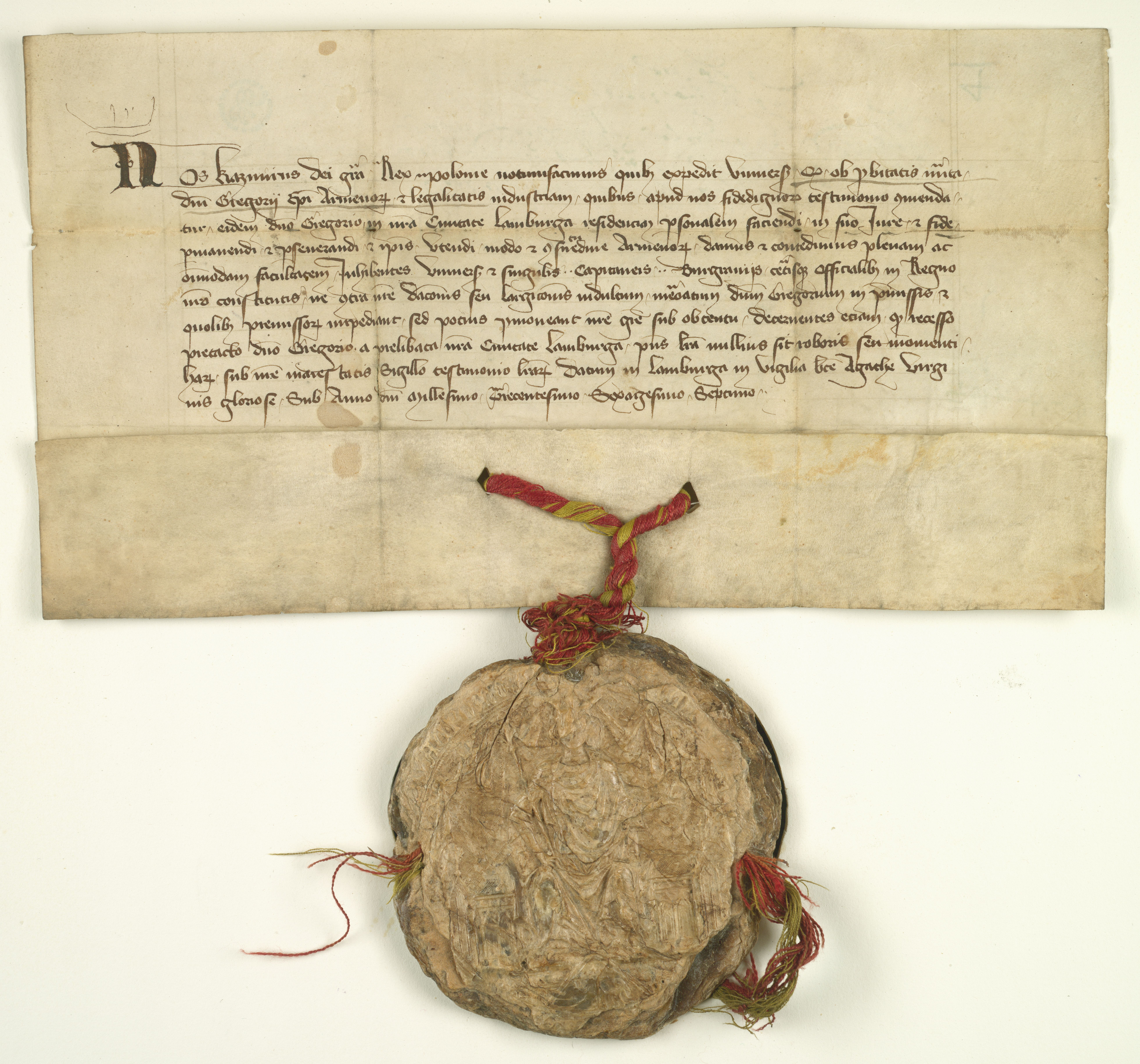
In 1343, Casimir secured a significant peace treaty, the Treaty of Kalisz, with the Teutonic Knights. This was preceded by a defensive alliance with West Pomeranian dukes Bogislaw V, Barnim IV, and Warcisław V, cemented by the marriage of Bogislaw V to Casimir's daughter Elisabeth. The treaty formalized the return of part of Kuyavia and Dobrzyń Land to Poland, in exchange for Poland relinquishing its claims to Gdańsk Pomerania, Chełmno Land, and Michałów Land. Though Poland made concessions, this treaty brought relative peace until 1409, allowing Casimir to focus on internal reforms and eastern expansion. Despite the treaty, Casimir did not cease to assert his ownership of Pomerania, and the Teutonic Knights did not pay the promised 10.00 K EUR. Later, tensions flared again, notably with the Rajgród incident in 1360, where Casimir's attempt to build a castle in a disputed border area led to a Teutonic attack, forcing him to abandon the project. In 1368, Casimir even visited the Teutonic Knights' capital, Malbork, likely to assess their strength.
2.3.3. Relations with the Angevin Dynasty of Hungary
Casimir III maintained close and cooperative ties with the Angevin Dynasty of Hungary, a policy initiated by his father. This relationship was particularly important due to Hungary's growing strength under rulers like Louis I. In 1327, Władysław I had already promised Charles I of Hungary that his son, Charles, would succeed to the Polish throne if Casimir died without male heirs. This promise was reaffirmed by Casimir himself during a serious illness and at the Visegrád Congress in 1335, where Louis was designated as his successor in the absence of a male heir.
In July 1339, Casimir visited Visegrád, formally naming Louis as his successor. In return, Charles I of Hungary ceded his claims to Halych and Volodymyr (Ruthenia) to Casimir and promised military aid against the Teutonic Knights, while the Angevin dynasty committed to regaining lost Polish territories if they inherited the throne. A key part of the agreement stipulated that if Casimir had a son, the Angevins could purchase Halych-Vladimir for 100.00 K EUR. In January 1355, a Polish delegation in Buda secured an agreement where Louis pledged not to levy extraordinary taxes and to pay for foreign military expeditions, in exchange for Polish noble recognition of his succession.
2.3.4. Expansion into Ruthenia and other territories
After securing his western and northern borders, Casimir turned his attention eastward, significantly expanding Polish territory. He conquered the Ruthenian kingdom of Halych and Volodymyr (modern-day Ukraine), known in Polish history as Red Ruthenia and Volhynia. This expansion began with military campaigns from 1340 to 1352, overcoming resistance from Lithuania and Tatar forces.
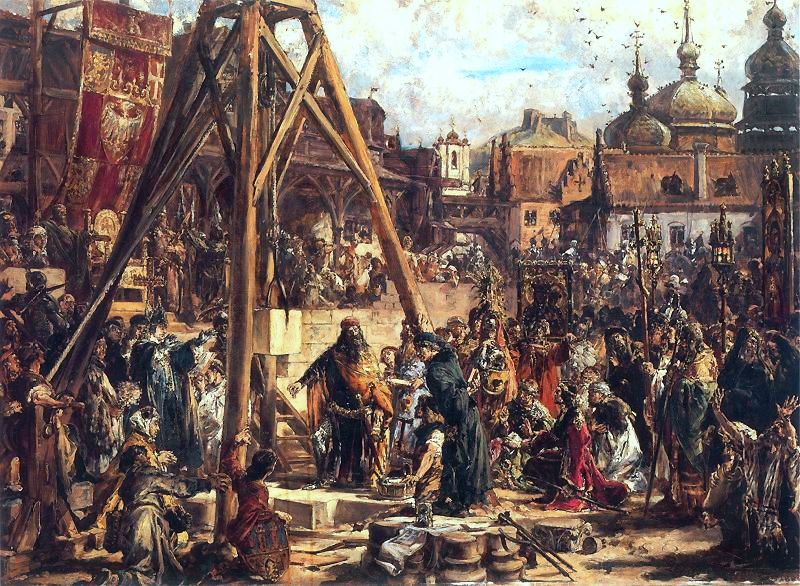
By extending the borders far to the southeast, the Polish kingdom gained crucial access to lucrative Black Sea trade routes, which greatly benefited its economy. Casimir approved the establishment of a Greek Orthodox metropolitan see in Galicia, allowing this religiously distinct territory to be integrated peacefully under Polish rule. In 1366, he further annexed Volhynia and Podolia, solidifying Poland's control over a vast eastern dominion. His diplomatic skill also extended to Lithuania, where he fostered peaceful conversion efforts to Catholicism, even gaining cooperation from Hungary and Luxembourg.
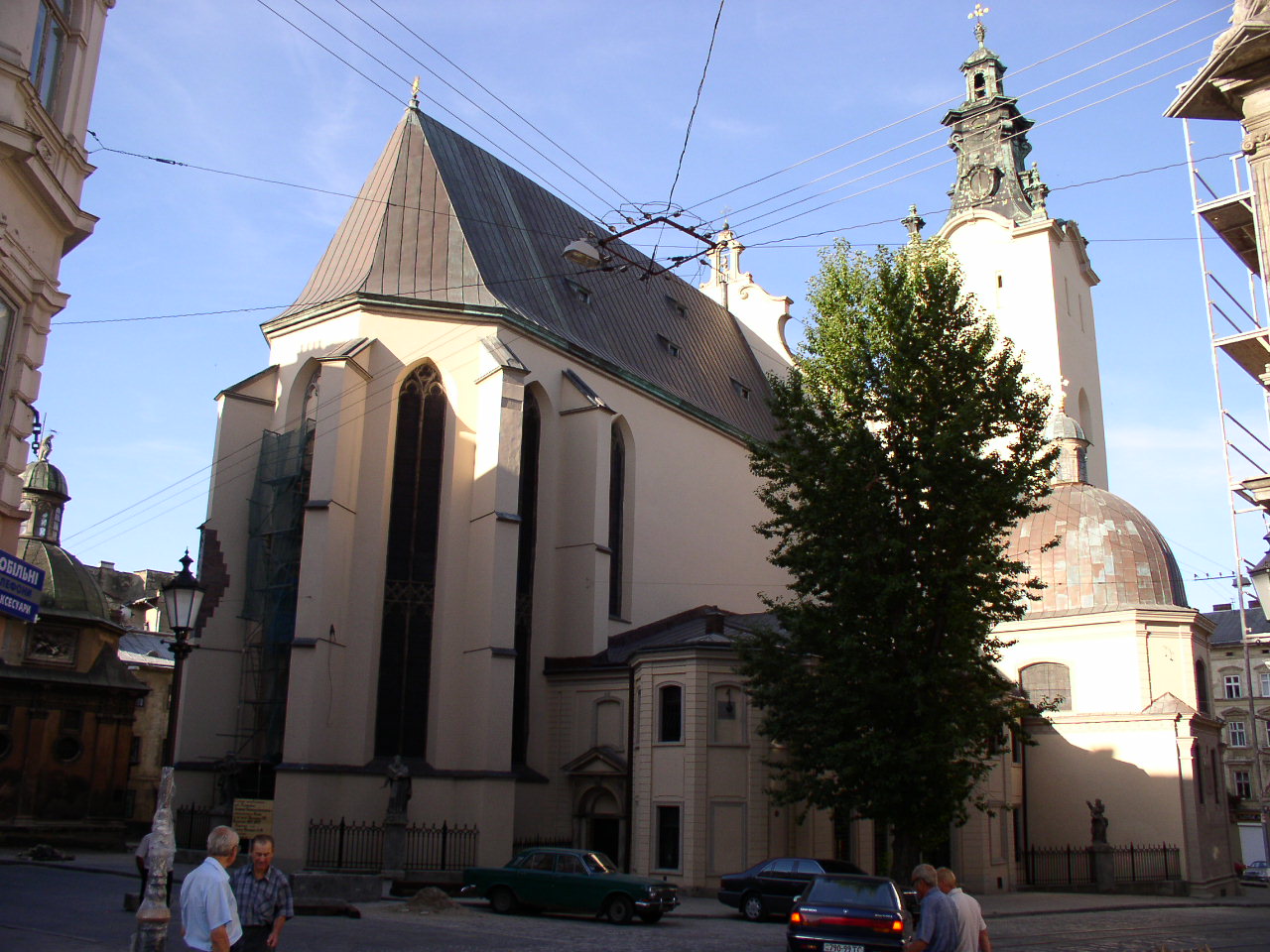
3. Relationship with the Jewish community
Casimir III was remarkably benevolent towards the Jewish community in Poland, a policy that had a profound and lasting impact. On 9 October 1334, he reconfirmed the extensive privileges previously granted to Jews in 1264 by Bolesław V the Chaste.
Under Casimir's protection, the kidnapping of Jewish children for forced Christian baptism was prohibited under penalty of death, and severe punishments were imposed for the desecration of Jewish cemeteries. While Jews had been present in Poland before his reign, Casimir actively encouraged their settlement in large numbers, designating them as people of the king, thereby offering direct royal protection. This policy of tolerance and encouragement led to a significant influx of Jewish immigrants from other parts of Europe where they faced persecution. Historians suggest that approximately 70 percent of the world's European Jews, known as Ashkenazi, can trace their ancestry back to Poland, largely due to Casimir's reforms and protective policies. The legend of Casimir's Jewish mistress, Esterka, remains a part of popular lore, though it is not confirmed by direct historical evidence.
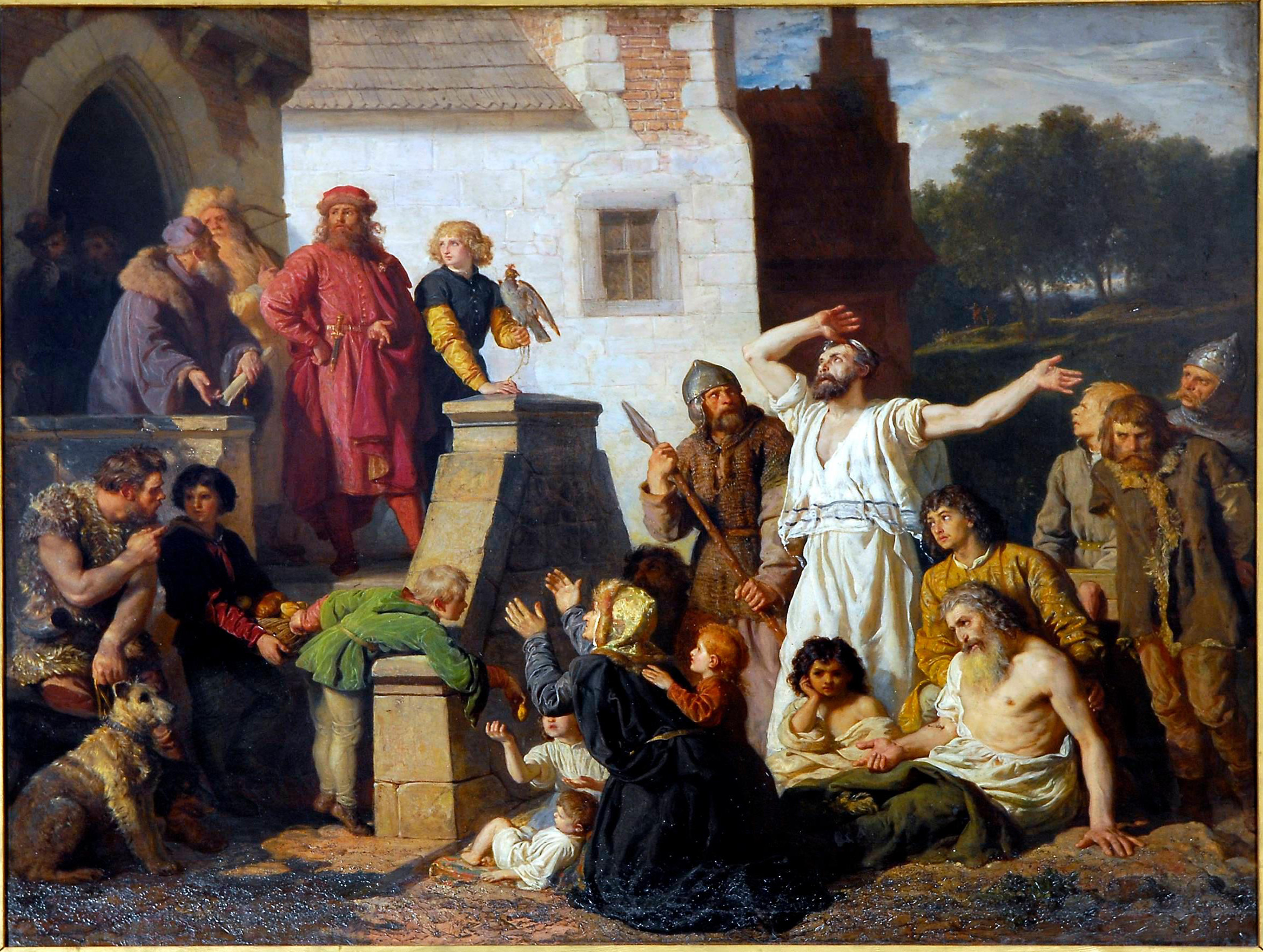
4. Personal life and family
Casimir III was married four times and had several children, both legitimate and illegitimate, which complicated his succession plans.
4.1. Marriages and legitimate issue
Casimir III was married four times:
- Aldona of Lithuania** (also known as Anna, possibly a baptismal name). They married on 30 April or 16 October 1325. Aldona was the daughter of Grand Duke Gediminas of Lithuania and Jewna. They had two daughters:
- Elisabeth of Poland (c. 1326-1361), who married Duke Bogislaw V of Pomerania in 1343.
- Cunigunde of Poland (1334-1357), who married Louis VI the Roman, the son of Louis IV, Holy Roman Emperor, in 1349.
Aldona died on 26 May 1339. Casimir remained a widower for two years.
- Adelaide of Hesse**. Casimir married his second wife on 29 September 1341. She was a daughter of Henry II, Landgrave of Hesse, and Elizabeth of Meissen. They had no children. Casimir began living separately from Adelaide soon after the marriage, which was loveless and effectively ended in 1356 when he declared himself divorced. Adelaide returned to Hesse.
- Christina Rokiczana**. After declaring his divorce from Adelaide, Casimir married his mistress, Christina Rokiczana, the widow of Miklusz Rokiczani, a wealthy merchant. Her origins are unknown, but she had been a lady-in-waiting at the court of Bohemia in Prague. Casimir brought her from Prague and convinced the abbot of the Benedictine abbey of Tyniec to marry them in a secret ceremony. This marriage, being bigamous as Adelaide was still alive, became public. Queen Adelaide renounced it, and Pope Innocent VI complained on her behalf. Casimir, however, continued living with Christina until 1363-1364 when he again declared himself divorced. They had no children.
- Hedwig of Żagań**. In about 1365, Casimir married his fourth wife, Hedwig of Żagań. She was a daughter of Henry V of Iron, Duke of Żagań, and Anna of Mazovia. They had three children:
- Anna of Poland (1366 - 9 June 1422), who first married William, Count of Celje; their only daughter was Anne of Celje, who later married Jogaila of Lithuania (as Władysław II Jagiełło), King of Poland. Anna then married Ulrich, Duke of Teck, with no children from that union.
- Kunigunde of Poland (1367 - 1370).
- Jadwiga of Poland (1368 - c. 1382).
As Adelaide (and possibly Christina) were still alive, Casimir's marriage to Hedwig was also considered bigamous, leading to disputes over the legitimacy of their three daughters. Casimir successfully secured the legitimation of Anna and Kunigunde by Pope Urban V on 5 December 1369. Jadwiga the younger was legitimated by Pope Gregory XI on 11 October 1371, after Casimir's death.
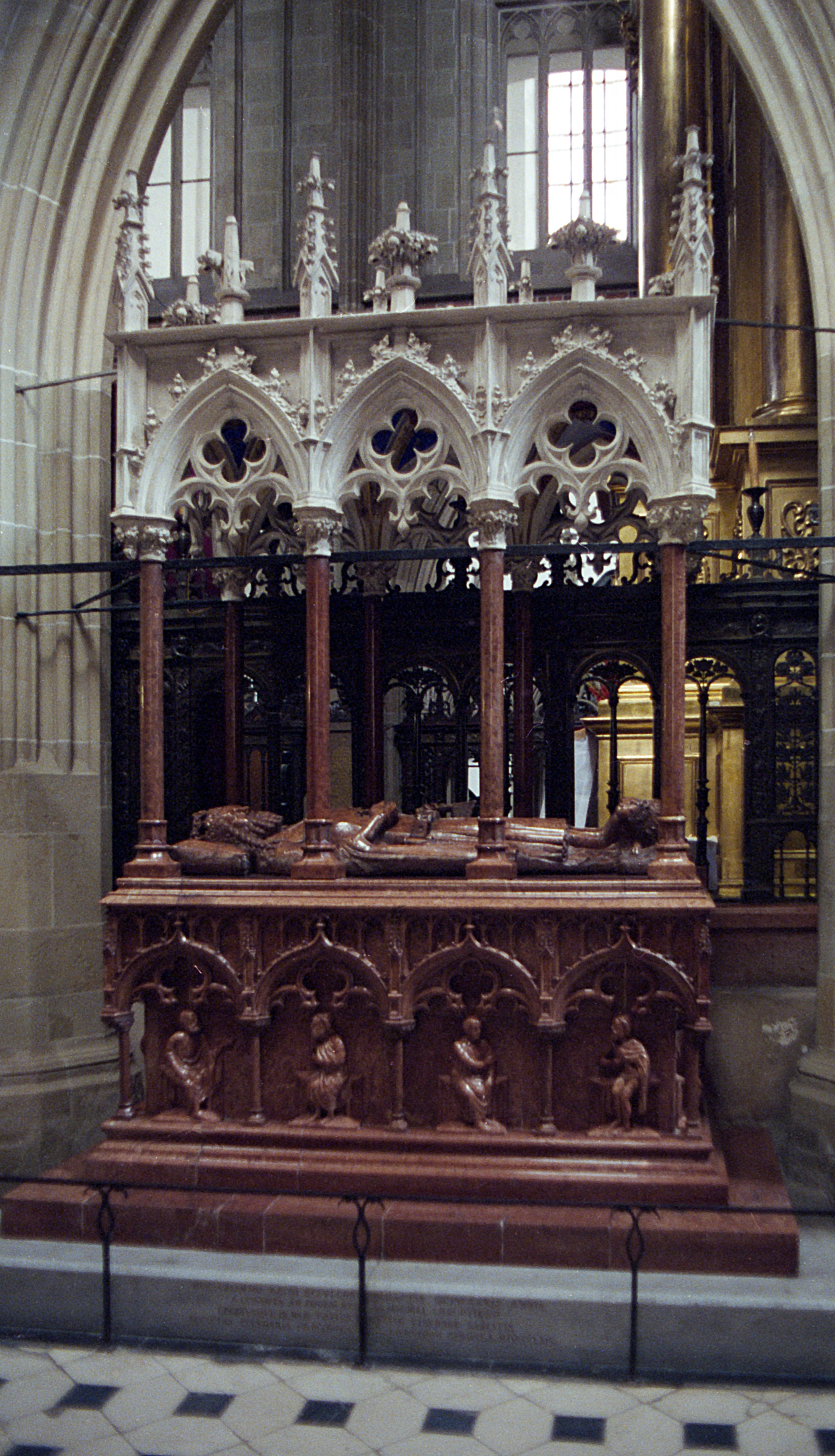
Casimir III's tomb at Wawel Cathedral 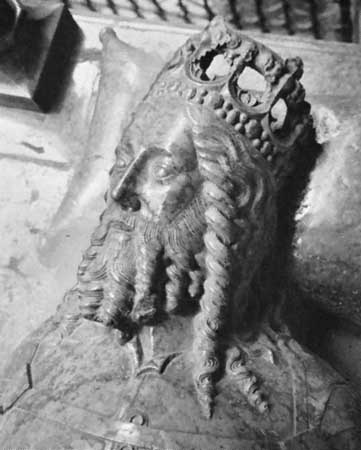
Effigy of Casimir III on his tomb, erected by his nephew Louis I of Hungary around 1371
4.2. Illegitimate issue
Casimir III also had three illegitimate sons with his mistress Cudka, who was the wife of a court official:
- Niemierz (last recorded alive in 1386), the eldest son, who inherited lands around Stopnica and reportedly saved his father's life.
- Pelka (1342-1365), who married and had two sons but died before his father.
- Jan (died 28 October 1383), the youngest son, who also inherited lands around Stopnica.
5. Succession
Casimir III's reign ended without a legitimate male heir, which significantly impacted the future of the Polish throne. He had only daughters from his legal marriages. In 1355, at Buda, he formally designated his nephew, Louis I of Hungary, as his successor in the event that he produced no male heir. This arrangement was part of a broader diplomatic strategy, where Casimir secured favorable relations with Hungary, which was crucial in his disputes with the Teutonic Order and the Kingdom of Bohemia. At the time, Casimir was 45 years old, and having a son still seemed possible.
Despite his hopes, Casimir never fathered a legal son. In his final will, he attempted to adopt his grandson, Casimir IV, Duke of Pomerania, the son of his eldest daughter Elisabeth, who was born in 1351. However, this part of his testament was ultimately invalidated. Immediately after Casimir's death in 1370 from a hunting injury, King Louis I of Hungary swiftly traveled to Kraków and secured the support of the Polish nobility by bribing them with future privileges.
Another potential successor was Casimir's son-in-law, Louis VI of Bavaria, Margrave and Prince-elector of Brandenburg, who had married Casimir's daughter Cunigunde. However, Cunigunde died in 1357 without issue, rendering Louis VI ineligible. Thus, upon Casimir's death in 1370, Louis I of Hungary succeeded him as king of Poland, establishing a personal union between the two kingdoms. Although Louis was proclaimed king, Casimir's sister Elżbieta, who was Louis's mother, wielded significant real power in Poland until her death in 1380.
6. Legacy and historical evaluation
Casimir III's reign is widely regarded as one of the most significant in Polish history, earning him the enduring title "the Great."
6.1. Positive reception and the title "the Great"
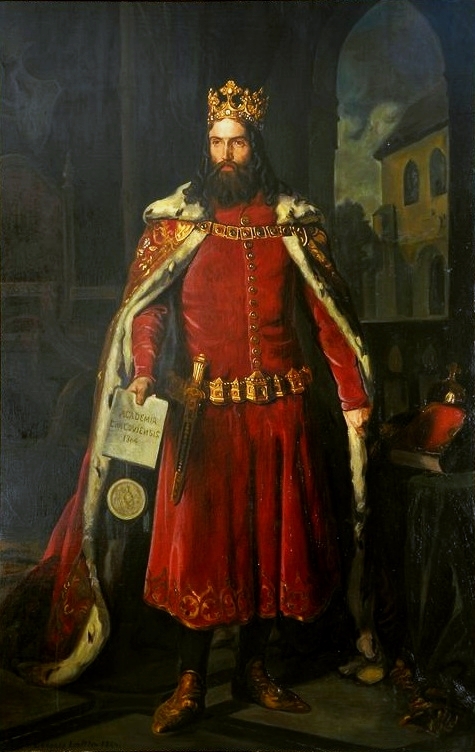
Casimir III's lasting legacy stems from his profound contributions to state-building, economic prosperity, and institutional development. He successfully transformed a fragmented and weakened kingdom into a unified, prosperous, and influential European power. His codification of laws, judicial reforms, and the establishment of the Corona Regni Poloniae laid a robust administrative foundation for the Polish state, ensuring stability and future prospects.
His economic and urban development initiatives, including the construction of city walls and numerous castles, are immortalized in the famous saying: "inherited wooden towns and left them fortified with stone and brick" (Kazimierz Wielki zastał Polskę drewnianą, a zostawił murowanąPolish). The founding of the Jagiellonian University in Kraków also marked a pivotal moment for Poland's intellectual and cultural advancement.
His popular moniker, "the Peasants' King," reflects his unprecedented support for the lower social classes, whose welfare he prioritized and protected against the powerful nobility. His policies ensured a degree of balance among the major social classes-nobility, clergy, and bourgeoisie-strengthening the monarchic position. His popularity with the peasants also facilitated the country's reconstruction efforts, partially funded by a land tax paid by this social group. Casimir is the only Polish monarch to consistently bear and retain the title "the Great," distinguishing him from other impactful rulers like Bolesław I, who is more commonly known as "the Brave."
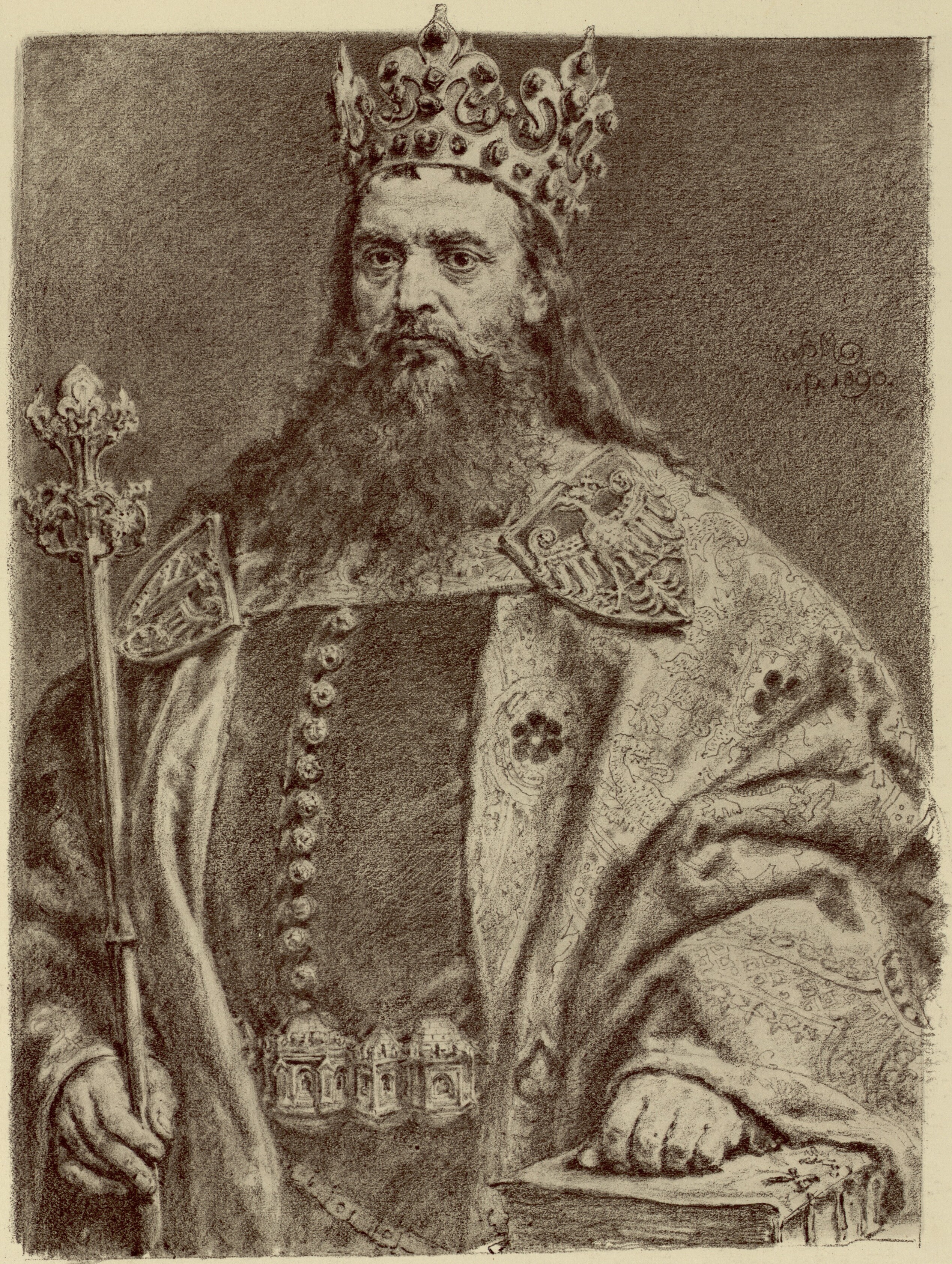
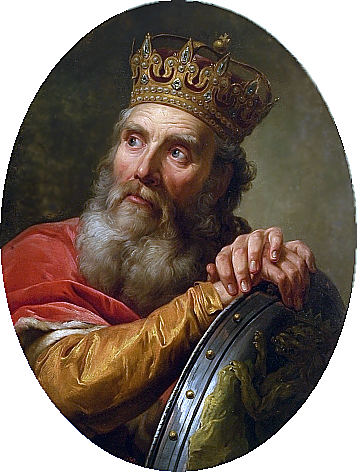
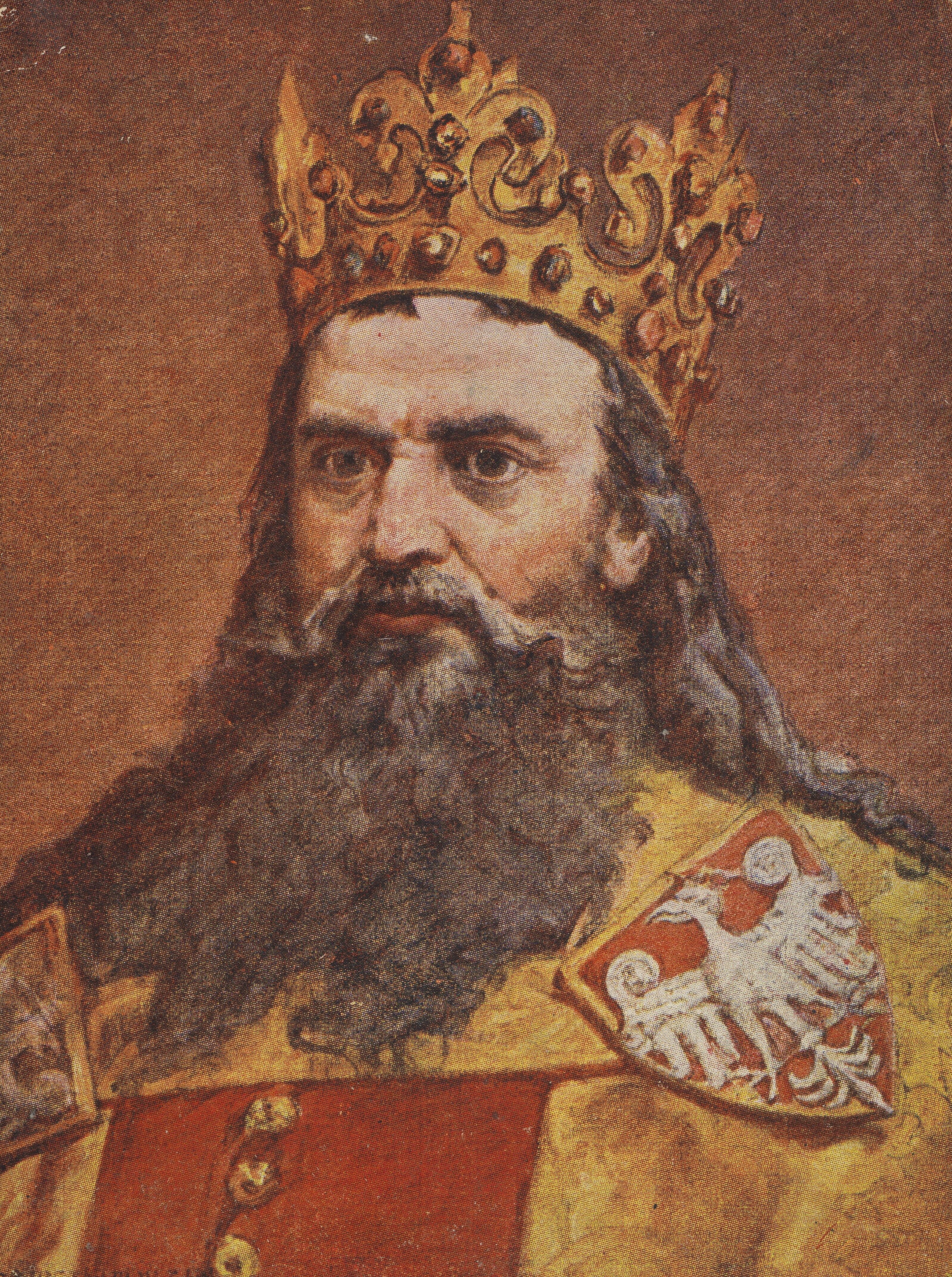
6.2. Criticisms and controversies
Despite his acclaimed achievements, Casimir III's rule and personal life were not without criticisms and controversies. His multiple marriages, particularly those considered bigamous while his previous wives were still alive, stirred significant controversy, requiring papal legitimization for his daughters' claims. The early Klara Zach incident, though it occurred before his reign, also stands out as a dark episode involving allegations of assault and violent retaliation from the victim's family, which some chroniclers linked to geopolitical intrigue by the Teutonic Knights. Historically, some interpretations might also critique the concessions made in foreign policy, such as the relinquishment of Silesia, although these were often strategic moves to secure more vital interests or consolidate power elsewhere.
7. Title and style
Casimir's full title was: Casimir by the grace of God king of Poland and Rus' (Ruthenia), lord and heir of the land of Kraków, Sandomierz, Sieradz, Łęczyca, Kuyavia, Pomerania (Pomerelia). The title in Latin was: Kazimirus, Dei gratia rex Polonie et Russie, nec non Cracovie, Sandomirie, Siradie, Lancicie, Cuiavie, et Pomeranieque Terrarum et Ducatuum Dominus et Heres.
8. In popular culture
Casimir III the Great continues to be a prominent figure in modern popular culture:
- Film:** He is a main character in the Polish historical drama series Korona królów (The Crown of the Kings), portrayed by Mateusz Król (season 1) and Andrzej Hausner (season 2). Casimir III is also mentioned in a speech by Amon Göth in the film Schindler's List.
- Video games:** Casimir appears as a playable leader in the 2010 strategy game Civilization V, having been introduced in its 2013 expansion, Brave New World. He is also featured as a ruler in the strategy game Crusader Kings II.
- Currency:** Casimir III is featured on the obverse side of the 50 Polish złoty banknote, with his regalia depicted on the reverse.
